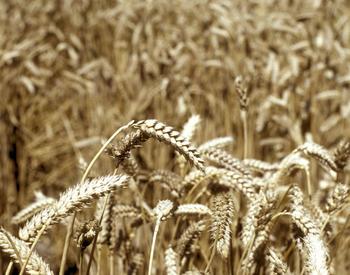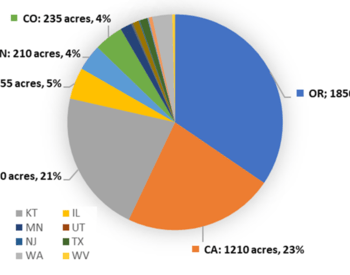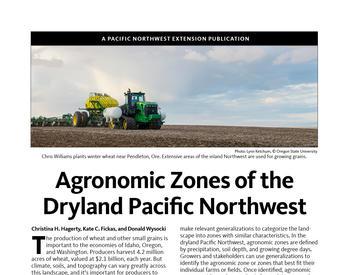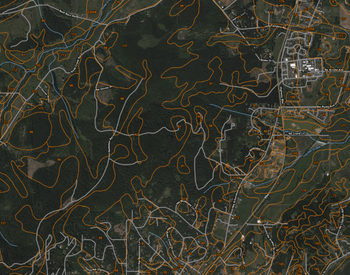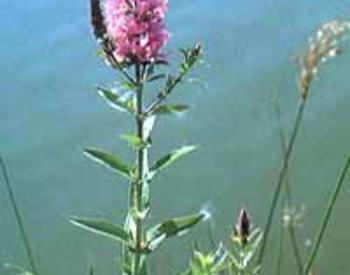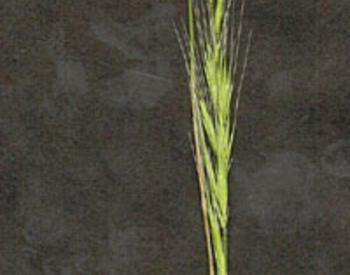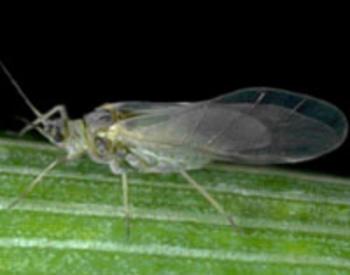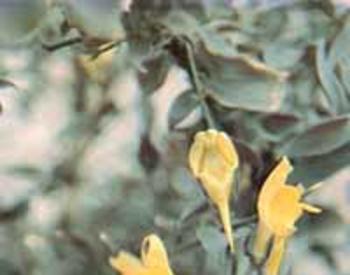Farmers grow certain crops as an integral part of their farm business, but some enterprises are important to the small farm only when part of a longer rotation. Grains are a terrific example of an enterprise that can be integrated into a whole farm system.
Small grains gross considerably less in sales compared to vegetables or perennial fruits and nuts; however, grains are less labor-intensive to grow and can be a valuable part of a rotation when the field needs rest from annual vegetables. Grains can be grown without irrigation because spring rains are usually adequate for plant growth; once seed heads form, the plant is done growing and needs only dry.
It is possible to extend the productivity of more marginal fields by growing small grains overseeded with clovers or alfalfa, which also helps to control weeds and minimize soil erosion. Also, hard red spring wheat can be harvested as early as the end of June, leaving plenty of time to turn that field over for a late summer planting. Typically, grains need about 110 days to mature, and then another thirty to sixty days to sufficiently dry for storage.
Choosing grains
When choosing which grains to grow, consider the other needs on your farm: Do you have livestock that benefits from straw bedding or do you use straw as mulch? If so, a tall grain like wheat might be a good choice. Easy to grow, wheat is a high yielder (expect a harvest of 40-60 times the amount of seed sown) and therefore labor-intensive in the threshing and winnowing stage of production.
Corn is perhaps the easiest grain to grow and requires less work to harvest than wheat or barley. Consider as well the dietary preferences of your family. If you enjoy polenta and cornbread, dent corn would be an excellent choice, particularly if you also have animals to feed on the farm.
Corn has a reputation as a heavy feeder, but Ryan Dolan of L & R Farms in Williams, Oregon, believes that this reputation is overstated: “Sweet corn is maybe a heavier feeder, but in my experience, dent corn is not that heavy a feeder.” Dolan grows dent corn as feed for his hogs, as well as for homestead use in the form of cornmeal and polenta. He plants corn in rotation after a nitrogen-fixing cover crop like fava beans or vetch.
Grains in rotation can contribute to soil sustainability by breaking the cycle of intensive tilling and cultivation required by vegetables, and more diversity generally means fewer pests and diseases. Soil-building legumes should be a part of any rotation.
Different grains are interchangeable in rotation, so one could easily substitute wheat or barley for dent corn in the small grains part of a plan. When considering adding grains to a crop rotation plan, consider your acreage and the potential uses of your fields. More marginal land may alternate between alfalfa and grains only, whereas fields with more productive soil may include row crops or vegetables, legumes and grains.
Sample rotations
Wheat, alfalfa, corn, soybeans
- Dairy farms with hay needs: Corn - winter cover crop of rye/vetch - corn - small grain/new seeding of alfalfa - alfalfa hay - alfalfa hay - alfalfa hay - corn.
- Produce farm: Sweet corn - winter cover crop of rye/hairy vetch – early potatoes followed by buckwheat cover crop – squash - oats/red clover plow-down - sweet corn.
- Row crop farm: Corn - soybeans - small grain (oats, barley, wheat)/new seeding of legume such as alfalfa for hay – hay - corn; hay can be repeated for 1-4 years, depending on the quality of the stand and need for organic hay, corn.
- Row crop farm: Small grain/hay - hay/pasture - hay/pasture - hay/pasture - buckwheat - soybeans - small grain/hay.
- Dairy farm: Corn - small grain/hay - hay/pasture - hay/pasture - hay/pasture - corn. Soybeans can be substituted for corn or added as a separate crop, if needed for a cash crop or used for feed. Hay fields may be used for fall pasture instead of taking a final cutting.
- Produce farm: Tomatoes or other heavy feeders - winter cover crop of rye/vetch - cucurbits (squash, cucumbers, melons) – spring wheat - brassicas (cabbage, broccoli, etc.) - winter cover crop of rye/vetch - greens (spinach, lettuces) or annual herbs - carrots or other root crops - winter cover crop of rye/vetch - peas, green beans, or edamame soybeans - winter cover crop of rye/vetch – tomatoes. Buckwheat can be planted between lettuce crops or after peas
Grains can be an economical way to reduce the feed costs for poultry as well. Some farmers cut the mature grain and leave it in the field for chickens to harvest themselves; however, some cereal grains, barley in particular, can be detrimental to poultry in large quantities.
Grains can also fill a different niche in the whole farm but the benefits may not be as easy to measure. For example, a stand of grain on your market farm could be valuable as a homesteading contribution to your family pantry. As well, grains may earn their place in your fields solely for the pleasure of watching a stand of wheat grow or for the pride of self-sufficiency that comes from baking bread that originated from your own soil.
